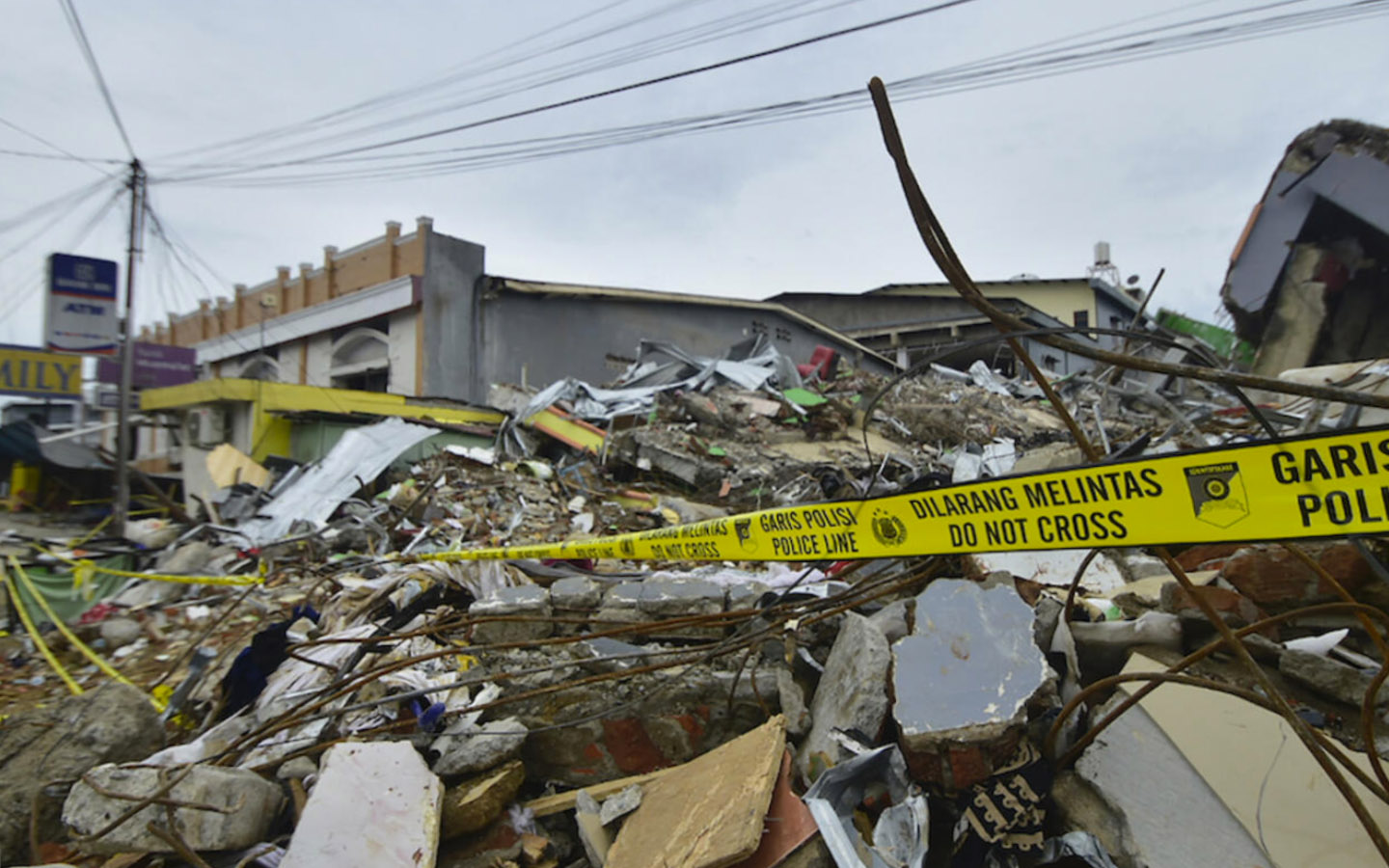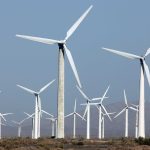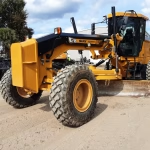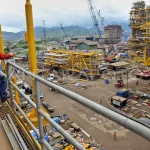Liga Asuransi – Dear readers, how are you? Hope your business is doing well…
Let’s continue the discussion about risk management and insurance, this time we will be talking about earthquake risks.
- What is an earthquake?
In simple terms, an earthquake (also known as a quake, tremor, or temblor) is the shaking of the surface of the Earth resulting from a sudden release of energy in the Earth’s lithosphere that creates seismic waves.
At the Earth’s surface, earthquakes manifest themselves by shaking and displacing or disrupting the ground. When the epicenter of a large earthquake is located offshore, the seabed may be displaced sufficiently to cause a tsunami. Earthquakes can also trigger landslides.
Earthquakes can range in intensity, from those that are so weak that they cannot be felt to those violent enough to propel objects and people into the air and wreak destruction across entire cities.
In its most general sense, the word earthquake is used to describe any seismic event—whether natural or caused by humans—that generates seismic waves.
The seismic activity of an area is the frequency, type, and size of earthquakes experienced over a particular time. The seismicity at a particular location in the Earth is the average rate of seismic energy release per unit volume. The word tremor is also used for non-earthquake seismic rumbling.
- How are earthquakes measured?
Earthquakes are recorded by a seismographic network. Each seismic station in the network measures the movement of the ground at that site. The slip of one block of rock over another in an earthquake releases energy that makes the ground vibrate.
That vibration pushes the adjoining piece of ground and causes it to vibrate, and thus the energy travels out from the earthquake hypocentre in a wave.
There are many ways to measure different aspects of an earthquake:
Magnitude is the most common measure of an earthquake’s size. It is a measure of the size of the earthquake source and is the same number no matter where you are or what the shaking feels like.
The Richter scale is an outdated method for measuring magnitude that is no longer used by the USGS for large, teleseismic earthquakes. The Richter scale measures the largest wiggle (amplitude) on the recording, but other magnitude scales measure different parts of the earthquake.
The USGS currently reports earthquake magnitudes using the Moment Magnitude scale, though many other magnitudes are calculated for research and comparison purposes.
Intensity is a measure of the shaking and damage caused by the earthquake, this value changes from location to location.
The research has received significant media coverage over the weekend, gaining traction among social media users who were worried that the study was an exercise in fear mongering disguised as science.
- Earthquake Insurance
Earthquake insurance is a form of property insurance that pays the policyholder in the event of an earthquake that causes damage to the property. Most ordinary property insurance policies do not cover earthquake damage automatically.
Most earthquake insurance policies feature a high deductible, which makes this type of insurance useful if the entire home is destroyed, but not useful if the home is merely damaged.
Rates depend on location and the probability of an earthquake loss. Rates may be lower for homes made of wood, which withstand earthquakes better than homes made of brick.
- Earthquake Risk Assessment
Earthquake risk assessment methodologies consider and combine three main factors: earthquake hazard, fragility/vulnerability, and inventory of assets exposed to hazard.
The assessment of earthquake risk in a portfolio, urban or regional scale constitutes an important element in the mitigation of economic and social losses due to earthquakes, planning of immediate post-earthquake actions as well as the development of earthquake insurance schemes.
The commonly used risk metrics in earthquake insurance are the Average Annual Loss and Loss Exceedance Probability curves. A rigorous treatment of uncertainty and correlation is needed for the proper estimation of these metrics and earthquake insurance-related decisions.
These factors exhibit aleatory and epistemic uncertainties embedded in their various components. Challenges exist in the characterization of the earthquake hazard as well as in the determination of the fragilities/vulnerabilities of the physical and social elements exposed to the hazard.
- The Potential of Earthquake in Indonesia
Due to the geographical location of the Indonesian Archipelago, the Republic of Indonesia is extremely vulnerable to natural catastrophes such as earthquakes, volcanic eruptions, and floods. The earthquake and Tsunami event on 26th December 2004 off the coast of West Sumatra, which was widely covered by the international media, will be a lasting reminder of the destructive forces of nature.
- Maipark, Indonesia’s Earthquake Insurance Pool
To create a solid insurance capacity for earthquake risks, the government of Indonesia has required all licensed general insurance and reinsurance companies operating in Indonesia to cooperate in creating special risk vehicles through a joint undertaking of all companies.
The result is the establishment of the Indonesian Earthquake Reinsurance Pool or Pool Reasuransi Gempa Bumi Indonesia (PRGBI).
The PRGBI began operations on 1st January 2003. At the same time, a compulsory earthquake tariff was introduced and endorsed by the government. With effect from 1st January 2004, the PRGBI was transformed into a public liability company, PT. Asuransi MAIPARK Indonesia.
As we all know that natural catastrophes cause numerous human lives and significant property damage each year. The scale of economic losses is constantly increasing due to population growth and the value concentration of sensitive technology in potentially risk-exposed areas.
Despite advances in scientific research, the non-predictability or randomness of natural hazards remains a challenge for earthquakes.
As we all know, the insurance industry plays an important role in supporting economic growth by diversifying risks and absorbing volatility.
Insurers act like an engine for economic recovery after major natural disasters. The objective is to form a community of insured who pay enough premiums to cover the cost of damage caused by a natural catastrophe.
While insurance cannot prevent natural catastrophes and loss of lives to occur, it can help people protect against the financial consequences of loss or damage to their homes and business by means of buying earthquake insurance.
While insurances offer earthquake insurance, there is no state requirement that consumers purchase earthquake insurance or that mortgage lenders require it.
With the help of reinsurers, both local and international, to whom most catastrophe risk is transferred, the insurance industry and the government reduce their respective financial and fiscal risk exposures.
Besides its function as a reinsurer, MAIPARK engages in research support, education of the public about natural disasters, risk mitigation, and more stringent and safer construction standards and building codes.
- How to buy earthquake insurance?
An earthquake insurance policy is package insurance, so you cannot buy earthquake insurance only. It must be together with another type of insurance, for example, property insurance plus earthquake insurance or motor vehicle insurance plus earthquake insurance.
To get the best earthquake insurance you should use the service of an insurance broker. The insurance broker is the insurance expert that is on your side helping you to understand the actual risk of your business, designing the insurance program including earthquake risks, and approaching the best insurance companies to negotiate for the best terms and conditions and the lowest insurance premium.
One of the insurance broker that have significant knowledge and experience in Indonesia is L&G Insurance Broker.
For all your insurance needs please call L&G now!
Sources:
- https://link.springer.com/article/10.1007/s10518-017-0235-2#:~:text=Earthquake%20risk%20assessment%20methodologies%20consider,embedded%20in%20their%20various%20components.
- https://www.researchgate.net/publication/346882202_Potential_megathrust_earthquakes_and_tsunamis_off_the_southern_coast_of_West_Java_Indonesia
- https://www.thejakartapost.com/news/2020/09/29/study-on-potential-tsunami-aims-to-inform-not-incite-panic-bmkg.html
- https://www.usgs.gov/faqs/how-are-earthquakes-recorded-how-are-earthquakes-measured-how-magnitude-earthquake-determined#:~:text=The%20Richter%20scale%20measures%20the,for%20research%20and%20comparison%20purposes.
—
Looking for Insurance Products? Don’t Waste Your Time and Contact Us Right Now
L&G HOTLINE 24 HOURS: 0811-8507-773 (Call – Whatsapp – SMS)
website: lngrisk.co.id
E-mail: customer.support@lngrisk.co.id
—














